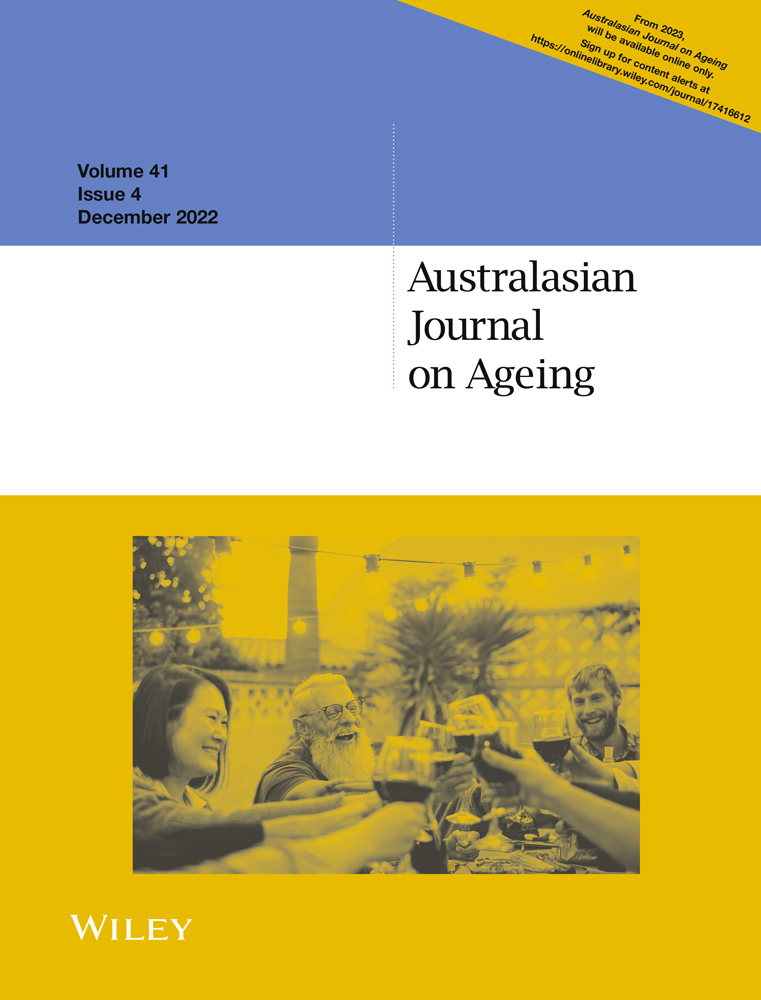A ‘plethora of services’ but a lack of consistency: A qualitative study of service providers' perspectives about transitioning from hospital to home for older South Australians
Funding information
This study was a part of STAAR-SA program, which was funded externally through a Medical Research Future Fund Rapid Applied Research Translation grant, administered by Health Translation SA. The study was peer reviewed as part of the application/award process. The funding body of this study has had no role in the study design or execution, data analyses or its publications
Abstract
Objective
We explored the perspectives of professionals working in health and aged care services in South Australia about factors that influenced successful transitions from hospital to home or residential aged care home for older people. We examined successful and recommended strategies that could support safe transitions following hospital discharge and reduce avoidable hospital admissions in South Australia.
Methods
Nineteen professionals from acute, post-acute, primary, community and aged care settings in South Australia participated in semi-structured interviews. Qualitative content analysis was conducted.
Results
Participants reported that navigating service provision could be difficult, compounded by different funding arrangements for hospitals, community, primary care and aged care services. Some participants felt that there was an over-reliance on the hospital sector, leaving primary care and community-based services under-utilised to support hospital transitions. The importance of good communication between services and sectors was highlighted. Participants described different categories of services that supported safe transitions by supporting older people immediately post-discharge; services that provided support to stay at home in the weeks and months following discharge; and services that helped the person receive health care at locations other than hospitals or emergency departments when they were unwell. Participants noted that successful programs were not always maintained.
Conclusions
Division of responsibility of aged and health-care services between state and national governance contributes to fragmentation of care in South Australia. Careful planning of transitions and coordination of services across sectors is required to ensure older people are supported in the months following discharge from hospital to reduce avoidable rehospitalisations.
CONFLICTS OF INTEREST
No conflicts of interest declared.
Open Research
DATA AVAILABILITY STATEMENT
The data that support the findings of this study are available from the corresponding author upon reasonable request.




